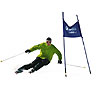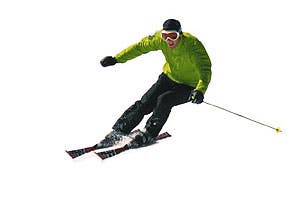How to Ski Different Models: GS Race


Keep ‘Em Floored
Speed is your friend, and a GS ski is like a speedboat-it doesn’t steer well until it really gets going. Once you reach race velocity, keep your skis on the snow as much as possible: Bases run faster on the snow than in the air. To control a GS Race ski, keep your legs strong-race skis require a lot of energy to bend. Use and develop your core strength and skeletal structure. Imagine “skiing on your bones” instead of relying only on your muscles. A race ski’s sidecut is honed for clean carves: Be prepared to release the edge and adjust your arc to account for line, ruts, knolls or bumps.
Watch Out For:
Losing shin pressure.
It’s important to keep your shins against your boot tongues. Releasing contact is similar to letting go of a race car’s steering wheel-and could be disastrous.
Locking and loading.
If you put your ski on edge and simply ride it, you’re at the mercy of the ski’s arc instead of making your own clean carve. This can lead to injury.
Bad neighborhoods.
A race ski is designed for a specific purpose: to turn fast. It’s not a forgiving all-mountain ski: A stiff tail and narrow sidecut makes it hard to manage off-piste, in bumps, or in crud and powder.
Click the slideshow below for a lesson.
Sept. 2004